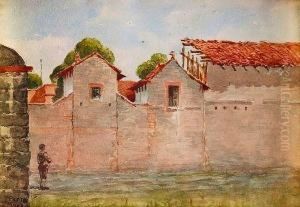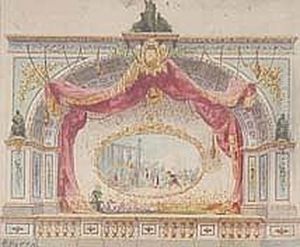Felix Parra Paintings
Felix Parra was a distinguished Mexican painter and illustrator born on December 16, 1845, in Guadalajara, Jalisco, Mexico. He studied at the Academia de San Carlos in Mexico City, which was the most important art institution in Mexico during the 19th century. Parra was particularly known for his historical and religious paintings, as well as for his commitment to depicting scenes from Mexican history with a sense of realism and detail.
In the 1860s, Parra traveled to Rome, which was a common practice for artists of that era who wanted to perfect their craft. During his time in Europe, he was influenced by the works of European masters, which is evident in his technique and use of light. Upon his return to Mexico, he applied these skills to his paintings, focusing on themes that would help build a sense of national identity and pride.
Felix Parra's work often portrayed significant events and figures from Mexico's past. One of his most famous paintings is 'Juicio de Cuauhtémoc' ('The Trial of Cuauhtémoc'), which shows the last Aztec emperor after being captured by the Spanish conquistadors. This painting, like many others by Parra, reflects his interest in the pre-Columbian era and the consequences of the Spanish conquest. His paintings were also known for their historical accuracy, as he conducted extensive research to ensure the authenticity of his depictions.
In addition to his historical works, Parra also painted religious subjects and was skilled at portraiture. His contributions to Mexican art were recognized during his lifetime, and he received several awards and honors. Felix Parra’s legacy is significant as he was part of a group of 19th-century Mexican artists who helped to shape the national identity through art. His works are preserved in various museums, and his influence can be seen in the works of subsequent generations of Mexican artists.
Felix Parra died on April 22, 1919, in Mexico City. His death marked the loss of one of Mexico's great historical painters, whose works continue to be studied and admired for their artistic quality and cultural significance.








